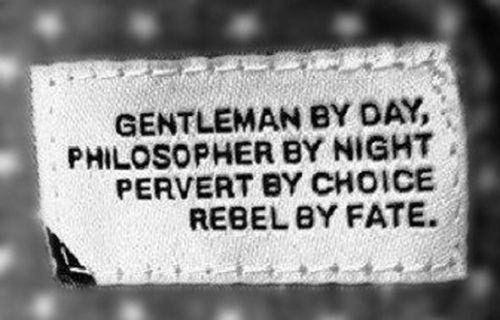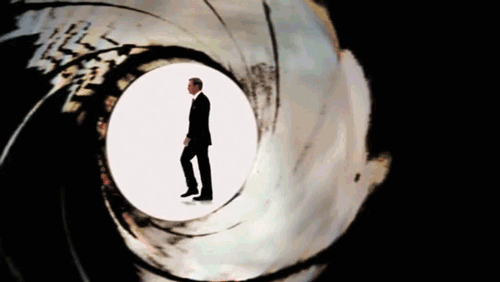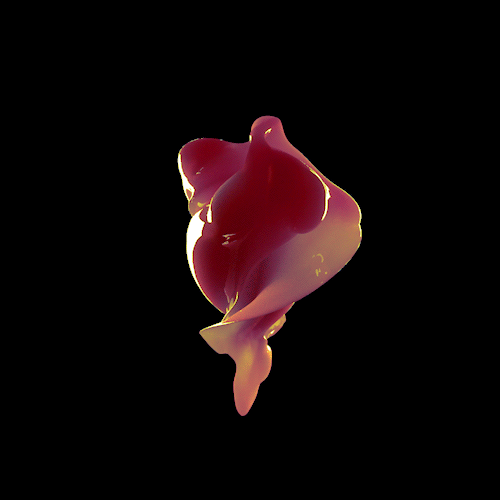Back in 1973, producer Ely Landau launched this daring and unprecedented cinema series that played in the U.S. for two “seasons,” with a total of fourteen titles (but only thirteen were shown), all renowned works—classic and modern—originally produced on the stage. Landau and his wife Edie were not Broadway producers, but they were Theatre People and had helped launch the “Play of the Week” series on PBS television, produced Sidney Lumet’s film version of Eugene O’Neill’s Long Day’s Journey Into Night (1962), and were keen on inventing a way to make Broadway (or the London stage) accessible to everyone in America—at their local movie theater.
This was the unique and exciting experiment called the American Film Theatre.
There have always been stage plays adapted for film—A Streetcar Named Desire, for example, or The Miracle Worker, or Hamlet. But plays like these were “re-imagined” for the film medium—the script was often changed or re-written with added or deleted scenes, the action was “opened up” to include locations outside of a single, claustrophobic stage set, and the roles were usually re-cast with “Hollywood actors” rather than “Broadway actors.” Then there were also the few stage productions that were filmed as is, i.e., cameras were set up in front of an actual proscenium stage while an already-rehearsed play was performed and the cameras simply recorded the production. Waiting for Godot (1961), for example, was done this way for television.
The American Film Theatre concept tried something different. The directive was to take a great stage play, not change a word, and in most cases, use the actual play script as the screenplay. The next step was to hire an accomplished film director to interpret the text for the film medium but stay faithful to the play. Sometimes the director was the same person who helmed the original stage production. A further step was to persuade the original casts from the Broadway or London productions of those plays to star in the film; or, when that wasn’t possible, to cast big-name Hollywood or British actors. Thus, the result was indeed a filmed play—but you as an audience member wouldn’t be watching it from the middle of the orchestra or from the side or from the first balcony; instead you were up close and personal in a realistically-presented world (on studio sets and/or real interior or exterior locations)—just like in “regular” movies. You had the best seat in the house, so to speak, but there’s no proscenium arch. It’s a movie. But it’s a play. Get it?
Landau didn’t have a lot of money to produce the series. Getting the rights to the plays was the easy part. In most cases, if the playwright was still living, he was more than happy to take a modest fee to see his play translated faithfully to the screen. Edward Albee, for example, had already gone through a Hollywood experience with Who’s Afraid of Virginia Woolf? During that production, he and producer/screenwriter Ernest Lehman often clashed over the script until Lehman finally gave in and used Albee’s original play text as the film script almost verbatim (and yet Lehman was credited for the screenplay and received an Oscar nomination for it!). So, when Landau approached Albee about doing A Delicate Balance in the American Film Theatre with promises that the actual play would be the screenplay, and Albee would have director and cast approval, the playwright jumped at the chance. Landau collected the rights to the plays he wanted in this manner and started from scratch with every production, except for two. Three Sisters, from the Anton Chekhov play and directed by Laurence Olivier, had already been produced and released in Britain only in 1970. Philadelphia, Here I Come!, from the Brian Friel play and directed by John Quested, was an Irish production set to be released in 1975. Landau bought the U.S. distribution rights for both films and presented them as two of the entries in the AFT program. Thus, Three Sisters and Philadelphia, Here I Come! were the only pictures in the entire two seasons that Landau and his team did not produce.
The talent (directors, actors, designers, technicians) was asked to work at a reduced rate or at scale. No one refused. It was for a cause they all thought was worthwhile. Lee Marvin, for example, joked that he “lost $225,000” by starring in The Iceman Cometh (which meant he did the movie for only $25,000—his going rate at the time was $250,000).
Grants from American Express and other organizations helped fill out the rest of the production costs. Finally, audiences were asked to subscribe in advance to a certain number of films in a particular season. They could buy tickets for the entire season or a lesser selection if they desired. Only four performances per film were shown at selective theaters around the country—simultaneously—and a new film premiered every month. Just like theatre, only in the cinema.
Beginning in October 1973, one picture played each month through May 1974. The second season consisted of six features (only five were actually shown) and ran in 1975.
Following the run of the second season, the films disappeared from public viewing (except for The Man in the Glass Booth). They were all re-issued theatrically in selected markets about a year later. Some time after that they were run on HBO. Then, after the new millennium, the excellent video company Kino International Inc. released the entire series on DVD. All fourteen features are now available in a deluxe box set that is worth every penny of its retail price, despite the fact that none of the films were digitally restored. (See www.kino.com for information on how to buy this set, as well as other great film classics.)


As with any cinema series, some entries are better than others. Here is an assessment of each American Film Theatre picture with a rating based on a 5-star system.
The Iceman Cometh by Eugene O’Neill (October 1973)
Directed by John Frankenheimer; Starring Lee Marvin, Fredric March, Robert Ryan, Jeff Bridges, Bradford Dillman, Moses Gunn.


What a cast! The premiere AFT feature presented one of the better acting ensembles of the series. It’s a tough movie to watch, though—the play is terribly depressing and long (O’Neill was known for his epic works). It’s a four-hour movie, with two intermissions, and the action takes place entirely inside a dark, gloomy Irish bar in 1912 New York. It’s a world of lost souls and hopeless drunks, and we get to know each character intimately. Lee Marvin plays Hickey, the traveling salesman whose imminent visit everyone looks forward to. Hickey is always the life of the party, buying drinks for all and leading everyone on a binge. But this time Hickey arrives sober and spends the play trying to convert his friends into going on the wagon. While Marvin has the showy role and is quite good, it is Robert Ryan, as Larry Slade (the play’s true protagonist) who is the heart and soul of the film. Ryan gives the performance of his career and it’s a shame it was ineligible for Academy recognition. Fredric March is also excellent (both March and Ryan died shortly after the film’s completion—this was their final film). Young Jeff Bridges is winning and the rest of the character-role ensemble is magnificent. Yes, it’s long. It’s a struggle at times. But in the end, you feel as if you’ve made a significant journey to hell and back. 5 stars.
The Homecoming by Harold Pinter (November 1973)
Directed by Peter Hall; Starring Paul Rogers, Ian Holm, Vivien Merchant, Cyril Cusack, Terence Rigby, Michael Jayston.


For my money, this feature is the most successful entry in the entire AFT series. Pinter is terribly difficult to pull off, and luckily Landau managed to get the original London cast and director for this production. Pinter’s plays have been called “theatre of menace” and this, his Tony-winning, best-known work, is the quintessential example. The story is about the ultimate British dysfunctional family—a crotchety old patriarch (Rogers), his wimpy brother (Cusack), his two hateful sons (Holm, Jayston), and the prodigal son (Rigby) who unexpectedly comes home for a visit with a new wife (Merchant). After a series of creepy—but hilarious—scenes, the family decides they will all share the new wife. The cast is excellent, especially Rogers and a young Ian Holm, who was one of Pinter’s longtime stage interpreters. This is black comedy—very black—at its finest. If you’ve never seen a Pinter play, this is a must-see. One of the best films of 1973, in or outside of the American Film Theatre! 5 stars.
A Delicate Balance by Edward Albee (December 1973)
Directed by Tony Richardson; Starring Katharine Hepburn, Paul Scofield, Kate Reid, Lee Remick, Joseph Cotten, Betsy Blair.


Albee seems to love dysfunctional families, too. This is a story of upper-class WASPs with all kinds of problems—mostly alcoholism affecting at least two members of the clan—and a surprise visit from their “best friends” who are suffering from some kind of mysterious, inexplicable terror. The friends want to move in and stay permanently. Albee’s Pulitzer Prize winning play is a powerful drama with excellent character studies. Again, the acting is superb—where else are you going to see Hepburn, Scofield, Cotten, Blair, Remick, and Reid all in the same room busting each other’s chops? But while the production is a good one, it’s not great. The pacing is slow and the setting indeed seems surprisingly more static than the bar in Iceman Cometh. Richardson could have pushed for a little more dynamics in the tempo and rhythms of the play, and then it would have been even more of a class act. Still, it’s worthwhile. 3 stars.
Rhinoceros by Eugene Ionesco (January 1974)
Rhinoceros is an archetypal example of the so-called “theatre of the absurd” movement on the stage in the 50s and 60s. The problem with adapting it to the screen is that these types of plays are specifically theatrical in nature. They depend on allegory, symbolism, metaphor, and surrealism that cannot be accomplished in a realistic presentation. O’Horgan, the man who directed Hair on Broadway, valiantly attempts to place this very surrealistic play into a modern, naturalistic city setting. It doesn’t work. The story: people all around an alcoholic Everyman (Wilder) are inexplicably turning into rhinoceroses. Of course, this is an allegory for Communism/Fascism. What makes the film moderately amusing and watchable are, again, the performances by Mostel (who originated the role of John/Jean on Broadway) and Wilder. They are such a pleasure to watch. Unfortunately O’Horgan has inserted a pop-song soundtrack (composed by Hair’s Gerome Ragni) and the thing just feels like it’s trying too hard to be “hip.” 2 stars.
Luther by John Osborne (February 1974)
Directed by Guy Green; Starring Stacy Keach, Julian Glover, Leonard Rossiter, Patrick Magee, Judi Dench, Maurice Denham, Hugh Griffith, Robert Stephens.


Osborne, the author of Look Back in Anger, wrote this poetic treatment of the life of Martin Luther, the man who “invented” Protestantism. The play is episodic, covering many years of Luther’s life from the time in which he was a confused and doubting monk to the point when he is put on trial by the Catholic bishops and excommunicated. It is an engaging, well-acted production. Keach is marvelous in the lead role, and the other fine British actors such as Magee and Denham, especially, are top-notch. A young Judi Dench has a small role toward the end as a nun-turned-Luther’s wife. Green’s direction is remarkably faithful in translating the stage transitions as indicated in the original playscript to the screen medium. One of the better entries in the series. 4 stars.
Three Sisters by Anton Chekhov (March 1974)
Directed by Laurence Olivier; Starring The Royal National Theatre Company (including Joan Plowright, Jeanne Watts, Louise Purnell, Derek Jacobi, Laurence Olivier, Sheila Reid, Ronald Pickup) and Alan Bates.


As mentioned above, Three Sisters was a film already produced and released in Britain in 1970, and therefore was not made by Ely Landau and the AFT. The film is a recreation of the National Theatre’s highly successful and critically-acclaimed 1969 production of the play, so it is much more “stagey” than any of the other films in the AFT series. (Bates was not a member of the company, hence he received separate billing.) Even as a Theatre Person, I will forever wonder why Chekhov’s plays are considered “comedies,” for they are usually dry, light dramas about middle-class Russian families in crises involving relationships and careers. While this production may have been very absorbing on stage, on film it is, frankly, a bit stuffy. Nevertheless, the cast is excellent and it’s probably the closest thing to a dead-on, faithful rendition of Chekhov on the screen that you’ll ever see. Unfortunately, the DVD has some sound issues—the dialogue sounds as if it was recorded in a barrel—but this could also be a symptom of the original film’s mix. 3 stars.
Butley by Simon Gray (April 1974)
Directed by Harold Pinter; Starring Alan Bates, Jessica Tandy, Richard O’Callaghan, Michael Byrne, Susan Engel.


It seems when Pinter is involved in an AFT production, it turns out very well. Butley is one of the best entries in the series, mainly due to the tour-de-force performance by Alan Bates in the title role as an alcoholic, razor-witted schoolteacher who is left by his wife and his male lover on the same day. If there was ever any doubt that Bates was one of the greatest actors of the 20th Century, then Butley is the film to see. The actor dominates the production in every frame. Even though he plays a despicable cad, his charisma and exuberance is infectious. If the film had been allowed to compete at that year’s Oscars, Bates surely would have been a contender. Pinter made his directorial debut with the picture and it exhibits confidence and style. One of the best films of 1974, in or outside of the AFT. 5 stars.
Lost in the Stars by Maxwell Anderson and Kurt Weill (May 1974)
Directed by Daniel Mann; Starring Brock Peters, Melba Moore, Paul Rogers, Clifton Davis, Raymond St. Jacques.
This is one of two musicals produced by the AFT, and it’s a surprisingly good one. Anderson adapted the original stage show from Alan Paton’s novel Cry, the Beloved Country (book and lyrics), while Weill provided the music. The story concerns a poor black preacher’s search for his missing son in apartheid South Africa, only to find that the young man has been arrested for the murder of a white man. The son goes on trial and is sentenced to hang. The preacher’s faith in God and humanity is shaken. End of story. A nice, cheery subject matter for a musical. Regardless of the downer storyline, there is a lot of heart in the material. The nearly all-black cast does a splendid job, especially with the singing. Unlike the other AFT productions, this one was filmed on location in Jamaica (doubling as South Africa) with many exterior settings. It’s a refreshing change from the rest of the series. Not spectacular, but worth watching. 3 stars.
Galileo by Bertolt Brecht (January 1975)
Directed by Joseph Losey; Starring Topol, Edward Fox, Tom Conti, Michael Lonsdale, Judy Parfitt, John Gielgud, Patrick Magee, John McEnery, Colin Blakely, Mary Larkin, Richard O’Callaghan.


Tricky business, attempting to film Brecht. After all, the playwright invented a theatrical language all his own (known as “epic theatre”) in which the medium made no attempts to hide the fact that audiences were indeed watching a theatrical production—more akin to Greek drama than most 20th Century theatre. Characters often broke the fourth wall of the proscenium arch to address the audience directly and “comment” on the action. Music and songs were used, often as narration, delivered by characters or a Chorus. Director Losey staged the first American production of Galileo, so he was the perfect choice to adapt it to the screen (the play was adapted from German by Charles Laughton in the 1940s and worked with Brecht himself for that production). Losey actually succeeds in re-creating the Brechtian theatrical conventions for the screen—a Chorus of three young boys sing narration directly to the camera, Galileo often addresses the audience, and sometimes stage rigging can be seen in the set pieces—and yet, this is a movie—and a very good one. Starring such renowned actors as Topol (in the title role) and a host of British stage superstars, it’s the fascinating story of the scientist’s clash with the Catholic Church preceding the Age of Reason. On first release, the film was positively received except for the casting of Topol, whose performance supposedly didn’t fit in with the rest of the production. I disagree—he’s marvelous, and the supporting cast is all superb. It’s not a perfect film, but it’s a darned good one—certainly an admirable representation of Brecht and his work. 4 stars.
Jacques Brel is Alive and Well and Living in Paris by Jacques Brel, Eric Blau, Mort Shuman (February 1975)
Directed by Denis Heroux; Starring Elly Stone, Mort Shuman, Joe Masiell, Jacques Brel.
The original musical was a very popular Off-Broadway extravaganza from the late sixties that was really a plot-less revue/concert of the songs of Belgian Jacques Brel (translated into English by Shuman and Blau). On stage, it was a delightful potpourri of musical vignettes performed entirely by four actor/singers. This does not translate well to the film medium. Heroux stages the songs in surreal, music-video-style shorts that call more attention to the pretentiousness of the concept than it does the music. While the performers are fine (especially Brel himself in a “cameo” number), the production tries too hard to be imaginatively trendy, when all it really succeeds in is unintentional silliness. Luckily, director Heroux fared much better in later years as a producer (Atlantic City, Quest for Fire). If you like the songs you may enjoy the film, otherwise it’s a curiosity. 1 star.
In Celebration by David Storey (March 1975)
Directed by Lindsay Anderson; Starring Alan Bates, Brian Cox, James Bolam, Bill Owen, Constance Chapman.
A story about yet another dysfunctional British family, this one takes place in Yorkshire as three grown sons return home to celebrate their parents’ 40th wedding anniversary. But apparently there are long-squelched secrets that need to bubble to the surface, so what starts out as an uneasy reunion turns ugly. Bates (again) is superb as the eldest (and trouble-making) son, but it is Cox who is strikingly charismatic as the silent, youngest young man on the verge of a breakdown. And then there’s the unseen, ever-present specter of the son who died at age seven. The film imported the cast directly from the original Royal Court Theatre production. One of the better entries; compelling and poignant. 4 stars.
The Maids by Jean Genet (April 1975)
Directed by Christopher Miles; Starring Glenda Jackson, Susannah York, Vivien Merchant.
One has to understand a little about Genet the man in order to appreciate his plays. He had a decidedly kinky world outlook, and this is very clear when one knows that his original intention for The Maids was that it be performed by an all-male cast in drag (it almost never is). The story concerns two sisters who are maids to a wealthy socialite. When Madame is away, the sisters role-play sadomasochistic scenarios in which one of them portrays Madame and the other enacts one of the sisters. They never seem to get to finish the fantasy—in which Madame is supposed to be murdered—before they are interrupted by the real Madame’s return. The three actresses are superb in this faithful adaptation of their London stage production. Audiences unfamiliar with the source material, however, will find it very strange and unsettling (as it should be). Not for everyone, but it’s a challenging and intelligent piece of work. 3 stars.
The Man in the Glass Booth by Robert Shaw (May 1975)
Directed by Arthur Hiller; Starring Maximilian Schell, Lawrence Pressman, Lois Nettleton, Luther Adler.


You won’t see playwright/actor Robert Shaw’s name anywhere in the credits of this film adaptation of his play because—in a departure from the AFT’s directive—the text was changed in many places to allow for a more cinematic experience…and Shaw was unhappy about it and had his name removed. However, director Hiller reports in an interview (a DVD extra) that when Shaw saw the film prior to its premiere, he was extremely pleased and asked that his name be reinstated, but it was too late! Nevertheless, the film is a riveting, first-rate drama featuring an Oscar-nominated, tour-de-force performance by Schell. The story, loosely inspired by the abduction and trial of Nazi war criminal Adolf Eichmann, concerns a wealthy Jew in New York City who is captured by an Israeli commando team and flown to Israel to stand trial as a concentration camp commander. Is the Jew really the Nazi colonel, or is he impersonating him because in truth he’s just a guilt-ridden Holocaust survivor? The surprise ending caps the American Film Theatre series with one of its best entries. 5 stars.
Philadelphia, Here I Come! by Brian Friel
Directed by John Quested; w/ Donal McCann, Des Cave, Siobhan McKenna, Eamon Kelly, Fidelma Murphy, David Kelly.
(Note: This film was not shown during the original run of the subscription series for reasons unknown. It was, however, released with the other thirteen pictures when they were re-issued as regular theatrical releases and on home video.) The second film that was purchased “pre-packaged” by Landau and the AFT, this Irish drama-comedy concerns a young man named Gar and his reflections on his life as he prepares to leave his small town in Ireland and emigrate to America. The theatrical conceit here is that Gar is played by two different actors—his “public” self (McCann) whom everyone sees and hears, and his “private” self (Cave), who is present to no one but the real Gar and serves as the young man’s conscience, pointing out the brutal truth in everything. It’s a small story with a big heart. Fine performances all around, especially from the rarely seen Siobhan McKenna as Gar’s housekeeper. Not a stand-out in the series, but certainly not a bad one. 3 stars.
The American Film Theatre could probably never be repeated, especially within the economic structure that exists in the motion picture industry today. It’s a shame, for even though the AFT was not a perfect product, it was a bold and fascinating experiment that attempted to blend the stage with cinema. It’s the kind of project that reminds us how recklessly courageous—and often artistically brilliant—filmmakers could be in the 1970s.
























No comments:
Post a Comment